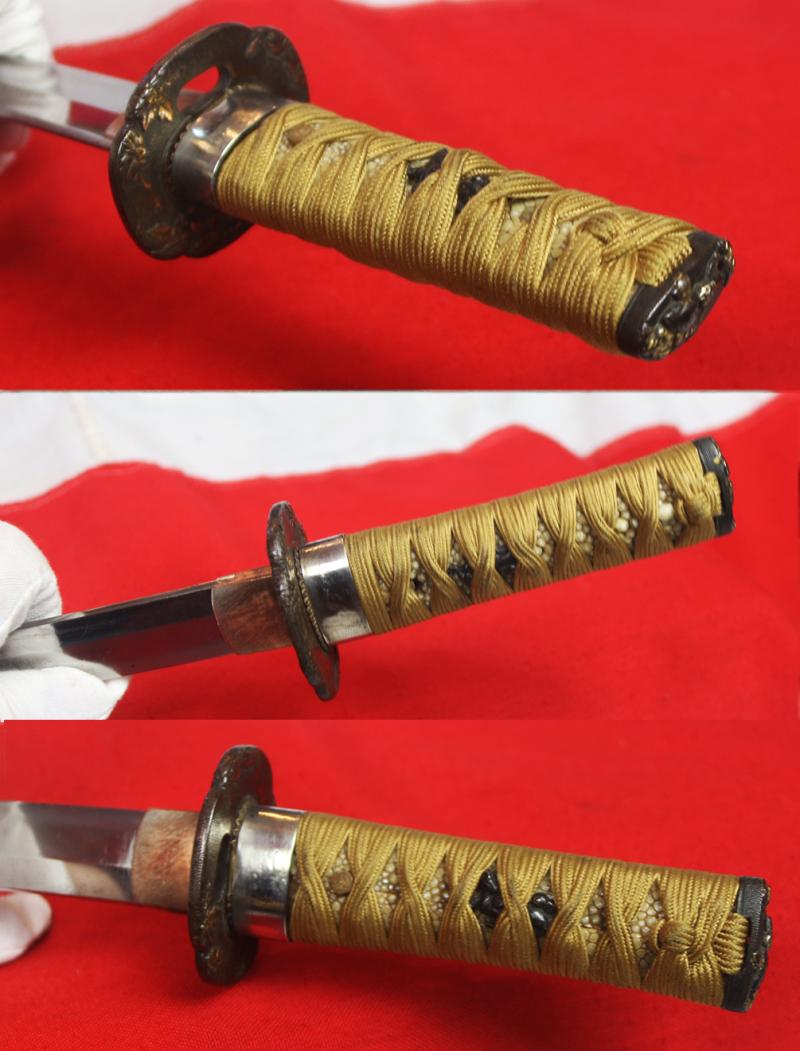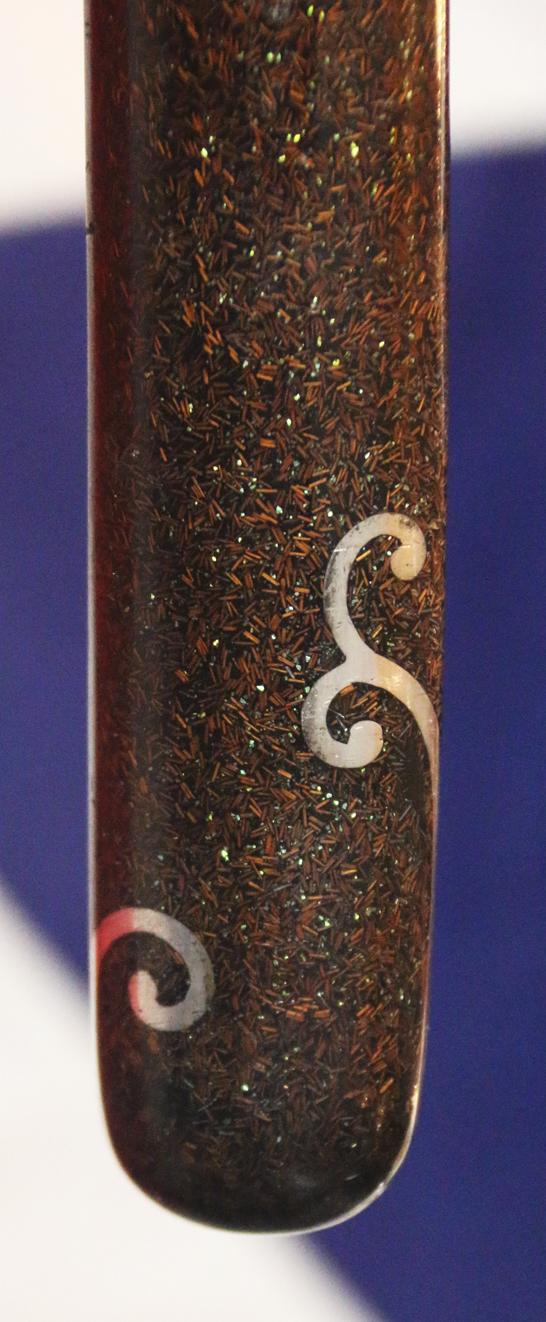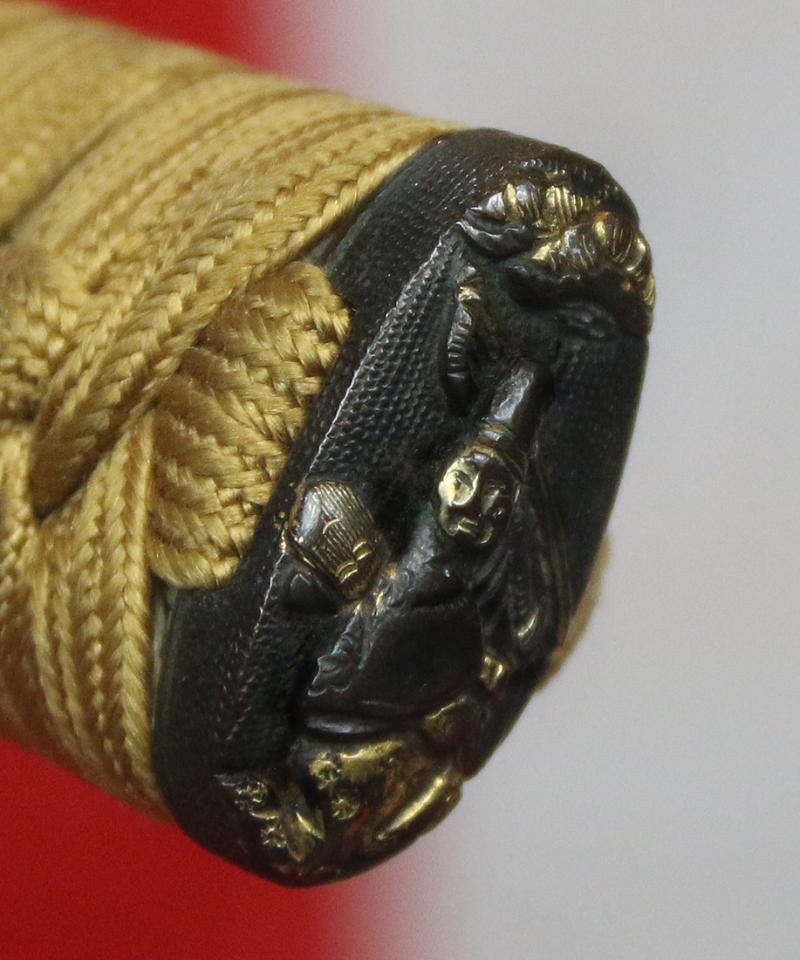A Most Beautiful Fine Quality Shinto Wakizashi With All Original Edo Period Fittings and Silver Mounts. Circa 1650
Japanese Wakizashi, with a signed Shinto, very good shinogi zukuri blade in fabulous polish, with a fine suguha hamon, and wazamono sharp.
The sword has a tsuka with gold ito bound over a pair of superb shakudo shishi lion dogs on samegawa, a shakudo kashira with nanako ground and decorated with takebori sage wearing a court cap, with gold highlights, and a plain silver fuchi and shakudo nanako tsuba decorated with plants.
It is in its original Edo period stunning saya, decorated with pine needle and abilone shell lacquer, an inlaid silver kojiri of elaborate scrolls, and a plain silver koi guchi that matches the silver fuchi, and a kozuka pocket for an optional kozuka to be housed.
Kanzan Sato, in his book titled "The Japanese Sword", notes that the wakizashi may have become more popular than the tanto due to the wakizashi being more suited for indoor fighting. He mentions the custom of leaving the katana at the door of a castle or palace when entering while continuing to wear the wakizashi inside. Wakizashi were worn on the left side, secured to the obi waist sash. Although they appear to be likely a relative expensive luxury compared to other antique swords from other nations, they are in fact incredible value for money, for example a newly made bespoke samurai style sword blade from Japan will cost, today, in excess of £11,000, take up to two years to complete, will come with no fittings at all, and will be modern naturally with no historical context or connection to the ancient samurai past in any way at all. Our fabulous original swords can be many, many, hundreds of years old, stunningly mounted as fabulous quality works of art, and may have been owned and used by up to 30 samurai in their working lifetime. Plus, due to their status in Japanese society, look almost as good today as the did possibly up to 400 years ago, or even more. Every katana, tachi, or wakazashi buyer will receive A complimentary sword stand, plus a silk bag, white handling gloves and a white cleaning cloth.
Excellent condition overall, superb polished blade showing a fine suguha hamon, a crisp, razor sharp cutting edge without blemish.
Code: 25032
4250.00 GBP










